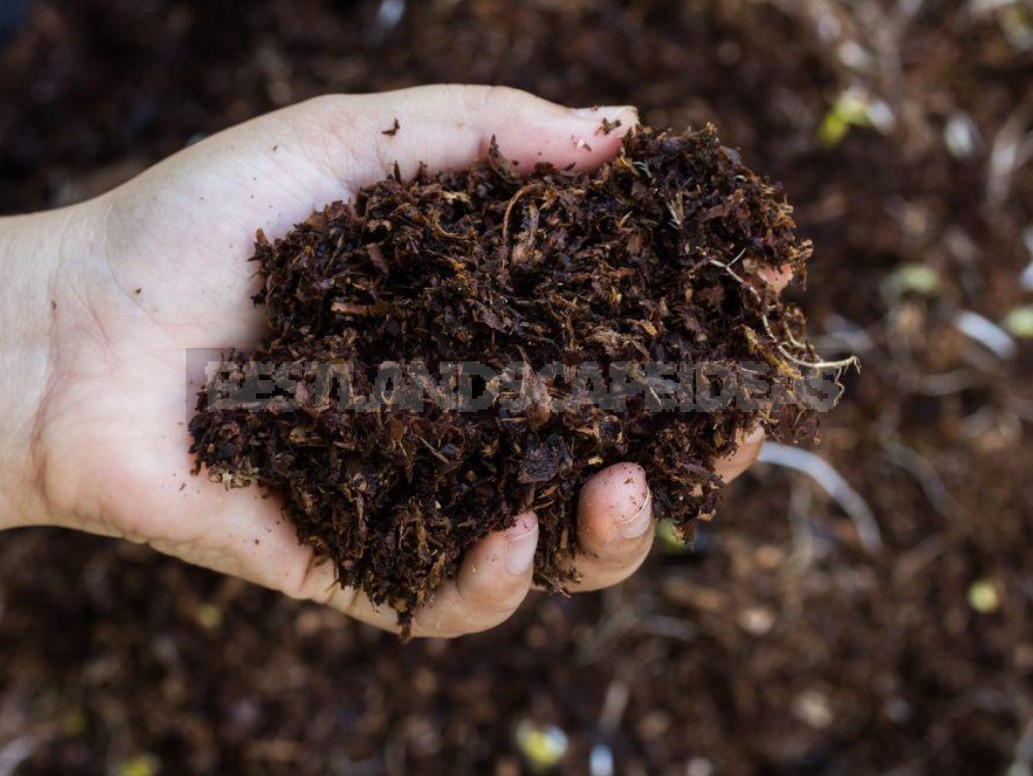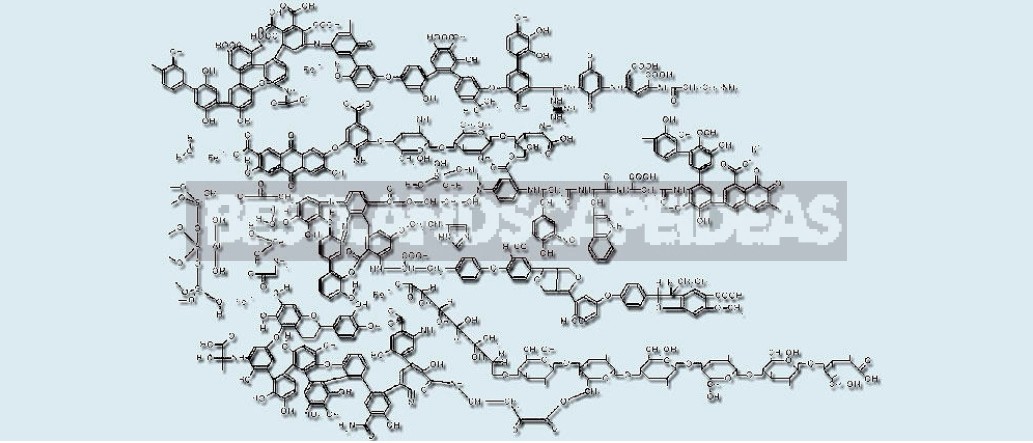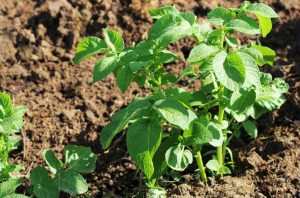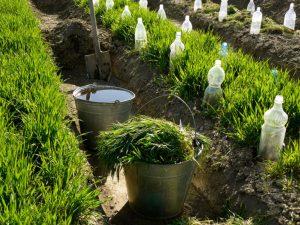The issue of soil fertility and plant nutrition is one of the most important for any gardener. Today, it offers the latest achievements in chemistry and Microbiology. But sometimes garden shops resemble a wizard’s shop: customers are offered drugs that, according to advertising assurances, can significantly or even tenfold increase productivity, protect plants from all possible misfortunes, stimulate and activate growth, flowering and fruiting.
Such advertising in some cases works positively for merchants: people, without thinking too much, buy, water, spray. Other gardeners obsessive offer of a panacea for all ills, on the contrary, scares.
One of the actively advertised products is humates and preparations containing them. From advertising descriptions, it is quite difficult for many to understand what they are, what their benefits are, how they work, and most importantly, how to use them correctly. Let’s try to figure it out.

Humic substances, humus, Chernozem
The definition of humates, in my opinion, is very complex. Judge for yourself: humates are salts of humic acids, which are part of a complex of humic substances (in addition to humic acids, this complex also includes humins and fulvic acids). Humic substances, or, in other words, humus (not humic!) acids that make up the humus.

And given that the average person often does not distinguish between such important concepts for a soil scientist as Chernozem and humus, considering all this as fertile soil, it becomes almost impossible to understand the location and purpose of humates in nature and their benefits for gardeners. It should be noted that scientists themselves find it difficult to answer these questions, and the discussion of the functions of humic acids and humates in the biosphere still causes heated scientific discussions. Therefore, you will have to start from afar before you tell us what preparations containing humates to buy, and how to treat plants with them.
Why does Chernozem consist of humus only by 15%
Let’s start analyzing this information. First, Chernozem is not a fertilizer or a type of loose non-metallic materials that you can buy, such as sand. This term refers to the type of soil formed over millions of years in certain regions of the Earth — on loess-like loams and clays, in the zone of the temperate continental climate zone.

For the formation of Chernozem, it is important to alternate rainy and dry times, as well as periods of rest with low temperatures. During these pauses, when the active life of plants and small and micro — life subsides, humus is formed from fertilizer (the first phase of decomposition of dead organic matter) – a kind of preserved nutrient organic substances, in which the process of decomposition of complex organic compounds to the simplest mineral substances has passed about half.
In tropical zones, despite the rapid life and, as a result, a large amount of dying organic matter, humus in the soil is practically absent, and in Chernozem its maximum amount can reach 10-15%. In the tropics, the process of humus formation and complete mineralization of organic residues is continuous, and in the black earth regions, humification (conversion of organic residues into humic substances) and accumulation of organic substances in the soil occur.
Humic substances: where they come from and what they are
Humic substances (humins, as well as humic and fulvic acids) are high-molecular compounds containing nitrogen, mainly acids. They are present not only in humus — they are everywhere in nature. In sea water, their content reaches 3 mg per liter, in river water-about 20 mg/l, in the same volume of marsh water, you can find up to 200 mg. Soils contain up to 15% of humic substances, and the largest amount is found in biogenic rocks such as coal, sapropel, oil shale, peat. Humic substances are formed from organic compounds as a result of the activity of microorganisms and the influence of environmental factors such as temperature, humidity, and light, but are not part of living organisms.

According to scientists, humic substances perform a number of important functions in nature:
- accumulation of useful substances in a form accessible to plants,
- creation of a nutrient medium for microorganisms,
- participation in soil structuring,
- regulation of geochemical flows of metals, interaction with humic acids (one of the stages of formation of ore deposits and accumulations of precious metals),
- detoxification (humic substances mitigate the effect of pollutants on living organisms, binding harmful substances into bioactive complexes).
Humic substances are the product of random synthesis, their composition varies depending on the original type of organic matter and external conditions during formation. Each molecule of humic substances is individual and has an irregular structure. And the huge (especially in humic acids) size of molecules and the number of variations in atomic ratios make these substances one of the most unpredictable and complex in structure of natural organic compounds.

Useful properties and applications of humates
We finally got to the humates. First identified, coined the name (and the term humic substances including) and classified them by German scientists, in particular F. K. Achard in 1786. In the XIX century, a great contribution to the study of humic substances was made by the Swede J. J. Berzelius.
In order to distinguish between complex and changeable humic substances, chemists decided to classify them by their ability to dissolve: humic acids are soluble in alkali, fulvic acids are dissolved by both alkali and plain water, and humin does not dissolve at all. Since the largest amount of humic substances is contained in peat, brown coals and sapropel (from 50 to 85%), it is from these materials that humates are obtained. Lignosulfonates, a by — product of pulp and paper production, are also used for this purpose.

The process of obtaining humates is not complicated at all, it can be done even at home, it is enough to treat peat or sapropel with a strong alkali. Most often, sodium hydroxide (caustic soda), potassium hydroxide (caustic potassium, potassium lye) or ammonium hydroxide (ammonia) are used for this purpose.
How it works
There is no answer to this question yet. Scientists for almost a century of research on the effect of humates on plants have not been able to fully understand the nature of their action on green organisms, there are only hypotheses and assumptions.

All researchers agree that humates are not directly a fertilizer (that is, food for plants), but only have stimulating and protective effects. There are 5 main areas of influence.
- Hormonal effects that lead to increased root formation.
- Improving the absorption of phosphorus and trace elements by plants due to the ability of humic substances to bind metal ions, turning them into bioavailable (chelated) forms.
- Improved transport of nutrients within the plant and its cellular respiration.
- Improvement of soil properties (activity of microorganisms, water retention capacity), its structuring.
- Reducing the surface tension of aqueous solutions. As a result, the permeability of cell membranes increases.

Especially increases the effect of humates in unfavorable conditions for plants — at low temperature, low or, conversely, high humidity.
How to apply it
Retail chains today can offer gardeners a wide variety of products based on humates. There are solutions-concentrates, preparations in the form of powder. Depending on the production method, sodium, potassium or ammonium salts of humic acids are offered.

- Which humates to choose
Depends on the type of plants you plan to use them for. Although there is a small amount of sodium, potassium or nitrogen in the composition of humates, experts advise to give preference to ammonium HUMATE or potassium HUMATE. Sodium for most plants is optional, and for some — and harmful element.
- Dosage
When using drugs, it is important to observe the dosage indicated in the instructions. If you exceed the recommended concentration or use too often, the opposite effect is likely — the growth and development of plants may be inhibited.

- When and where to apply
The most effective use of humates at the initial stage of plant development: for soaking seeds, processing seedlings when planting in a permanent place. Since humic acids contribute to better absorption of microelements by the plant, it is recommended to combine treatment with humic preparations with top dressing.
The use of humates is justified on soils that are poor in natural humus: sandy, alkaline, after liming. Do not forget that these useful substances are not fertilizers — they can not replace the introduction of basic nutrients. You can compare them to seasonings in cooking: you can’t get enough of them, but they make food tastier and promote digestion.
Spoon of tar
There are many positive reviews about the use of humates. Recently, gardeners are advised to use them very actively, even obsessively: now humic acid salts can not only be offered as separate preparations, but also be part of a variety of products. However, there is quite an authoritative opinion that humates are actually a simple siphoning off of money.

Manufacturers ‘ claims about the positive effect of these substances on plants are based, as a rule, on the classic works of soil scientists. Adding humates to the solution showed a clear positive effect. So far, no large-scale field tests have been conducted that provide real, measurable and analytical results.






